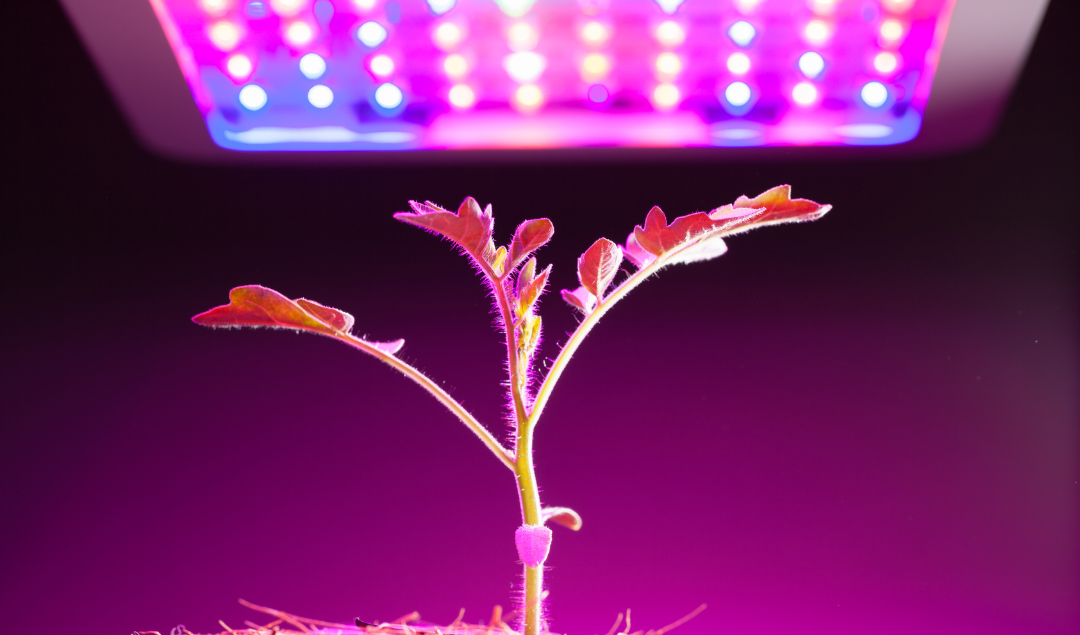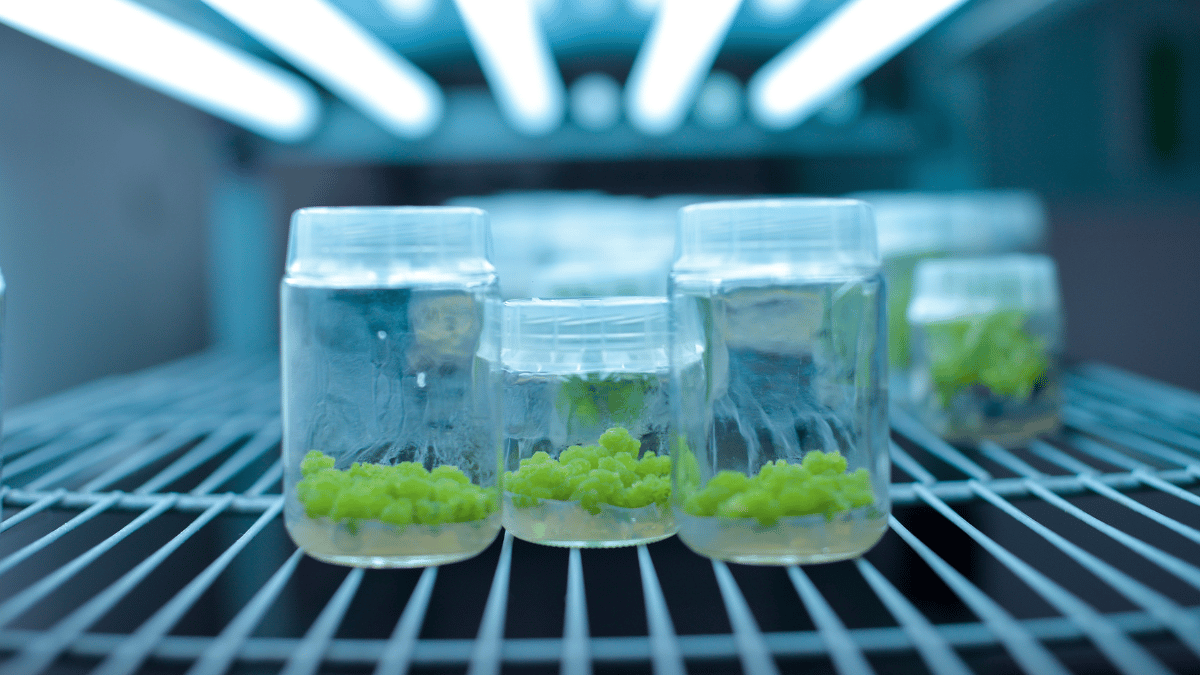
Role of Lights in Plant Tissue Culture
As a content and community manager, I leverage my expertise in plant biotechnology, passion for tissue culture, and writing skills to create compelling articles, simplifying intricate scientific concepts, and address your inquiries. As a dedicated science communicator, I strive to spark curiosity and foster a love for science in my audience.


Introduction
Environmental factors play a crucial role in the proper growth and development of plants. Light, relative humidity, gas exchange, and temperature are major environmental factors that decide how the in vitro plants will turn out to be, in addition to other physical and physiological factors.
Light impacts almost every aspect of plant life. Photoperiod, wavelength, and flux density are the three characteristics of light that determine plant development, such as leaf size, stem elongation, and plant anatomy.
Light is an important source of energy for plants that facilitate the photosynthesis process, using which plants make their own food. Furthermore, it also influences other physiological processes, such as secondary metabolite production, stomata opening, plant movement, and chlorophyll content in plants.

This article covers the effects of light intensity in tissue culture and how different types of lights serve different roles in creating a suitable environment for plants.
Role of Light in Normal Plants
The amount of light plays a crucial role in the growth and development of plants. It acts as the main source of energy to carry out many physiological functions. For example:
- Role in Growth: Photomorphogenesis (development of plants based on the incidence of light) is a crucial phenomenon facilitated by light in plants.
- Role in Photosynthesis: Light is the primary source of energy to carry out photosynthesis in plants. The amount, duration, quality, and intensity of light received by plants determine the amount of photosynthesis carried out by plants.
- Role in hormone Distribution: Certain hormone distribution can also be facilitated by light. For example, the bending of the stem towards the light source occurs due to unequal distribution of the auxin hormone in plants.
- Role in Movement: The movement of plants towards the sun (such as you would have observed in sunflowers) is facilitated by light. The term for such a phenomenon is phototropism.

Role of Light in Plant Tissue Culture
Light influences major physiological changes in in vitro plants, such as plant development, growth, morphogenesis, metabolism, and chlorophyll content. During micropropagation, light intensity and source play a crucial role in the regeneration of shoots, fresh weight, and secondary metabolite biosynthesis in various crops, such as cauliflower, Persian shallot, Cistanche, and date palm. Additionally, light can affect the efficacy of plant growth regulators (PGRs) and the levels of endogenous hormones. It has also been observed that low light works better for callus formation and growth.
Light intensity enhanced by CO2 enrichment stimulates the photoautotrophic growth of chlorophyllous tissues and the accumulation of photosynthetic compounds. Moreover, it has also been observed that increasing the light intensity changes the morphology of in vitro plant leaves similar to ex vitro plants. The plants have been found to have thick leaves, functional stomata, and larger palisade and spongy parenchyma.

Type of Light and Their Effects on In Vitro Plants
Even a slight change in light is sensed by plants via their cryptochrome and phytochrome receptors, which leads to corresponding changes. The quality of light is essential for the healthy growth of plants, as it affects photosynthesis and other developmental and biochemical processes, such as flowering, plant shaper, germination, and stomatal regulation.
However, it must be noted that different plants perceive prefer light conditions. For example, the red/blue (1:1) combination is suitable for Vaccinium corymbosum. Whereas, the combination of blue and red (3:1) spectra is more suitable for rapeseed cultures.

Micropropagation uses white fluorescent light with a wavelength spectrum between 400-700 nm, which matches the in vitro culture requirements. In addition to white fluorescent lights, light-emitting diodes (LED) with a single wavelength have been another popular choice among culturists.
However, if you compare white fluorescent bulbs and LED lights, the latter wins the battle against the other. This is due to many reasons which are covered in the next section.
LED Lights For Tissue Culture Plants
A growing number of commercial plant tissue culture laboratories are using LED lights since they offer many advantages over conventional lighting systems, such as high-pressure solid halide metal, fluorescent light, and incandescent. It includes:
- Optimal beam control
- Enhance the growth of plants
- Plants incubated under it will not be heated as it does not generate heat
- LED lights are 3X efficient than fluorescent lamps
- Compared to fluorescent lights (required for 16 hours), LEDs are only required for about 12 hours per day
- The lights have 8 years of lifetime ( long operating lifetime)
- You can save money by using LED lights of red and blue colors (which is most preferable by plants) and providing plants with what they need. However, the correct ratio of blue to red is necessary for such conditions. For example, the strawberry cultivar ‘Akihime’ prefers a combination of 30% blue+70% red lights for its healthy growth.

LED lights also provide many other advantages, such as wavelength specificity, small size, durability, linear photon output in relation to input current, relatively cool emitting surface, and the ability to control spectral composition.
Moreover, LED lights also solve environmental issues associated with fluorescent bulbs that produce excessive amounts of waste through their auxiliary devices, such as starters and ballasts.
As technology improves and LED prices reduce, fluorescent lamps are being replaced with LED lamps, as various studies have found that plants grown under LED lighting thrive better in the latter.

Ways To Improve Lightning For Tissue Culture Plants Improvements
The right intensity of light is important for plants, as too much light can burn plant tissues and too low light can affect the proper growth and development of plants. Moreover, the right ratio of blue to red is also essential for the healthy development of in vitro plants.
If you’ve found the right quantity, quality, and duration of light required for your in vitro plants, here’re three ways to ensure that your cultures are getting proper light:
- Transparent caps of culture jars allow lights to enter the jars and reach plants
- To allow the lights to pass sideways, provide proper spacing between jars
- Use the same lighting brand and prevent variations as it can affect plants' adaptation to the light, thus plants’ health.

Learn The Right Way To Do Plant Tissue Culture From Plant Cell Technology
Plant Cell Technology is the leader in the plant tissue culture area. We offer you world-class tissue culture products, services, and other solutions to make your tissue culture as smooth as possible. In our PCT store, you can find all tissue culture products you need for the process, ranging from MS media, Agar, Gellan Gum, PPM, Culture Vessel, Starter Kit, Biocoupler(TM), and many more things.
Furthermore, if you’re stuck at a tissue culture stage or need help to get started in your tissue culture business, we have tissue culture consultation services. By choosing this service you can have a one-on-one conversation with our tissue culture expert and get instant solutions to all your tissue culture problems.
We also have blogs and Youtube videos that release useful educational content each week. From tissue culture theory to practical procedures, we have created everything you need to learn about tissue culture. Check it out here now!
If you have any questions about our tissue culture products and services, write to us at info@plantcelltechnology.com.
Happy Plant Tissue Culturing!
Blog Categories
View by Level
Popular Blogs

Callus Culture: Definition and Applications
Introduction Tissue culture is not just one technique! Yes, you heard right! As you know, tissue culture is an advanced...
Read More
6 Plant Tissue Culture Books to Keep Learning
Introduction Most of us are fans of books when it comes to learning a topic in detail and in a...
Read MoreSubscribe to Our Newsletter








Join the conversation
Your email address will not be published. Required fields are marked